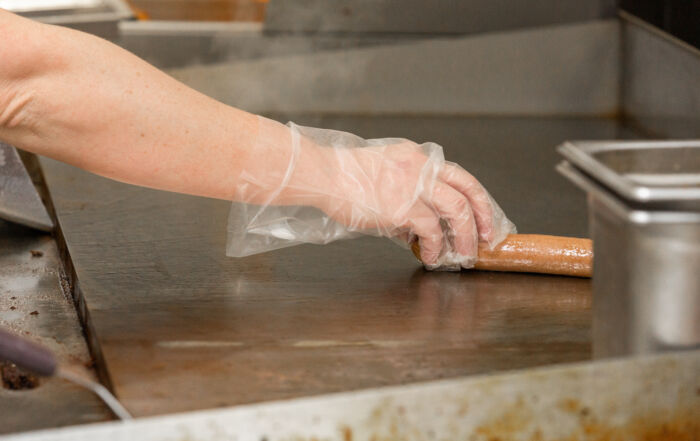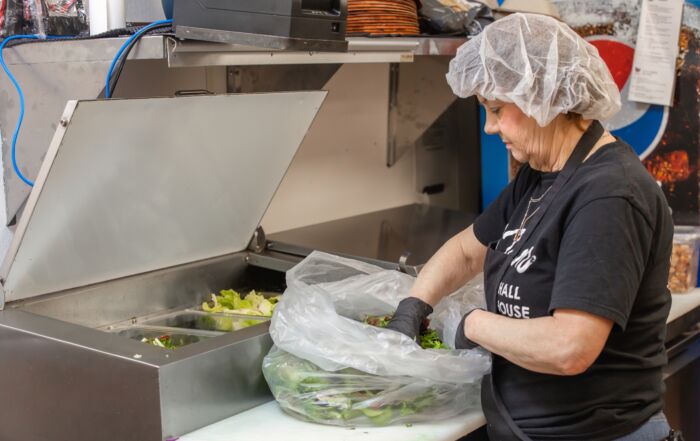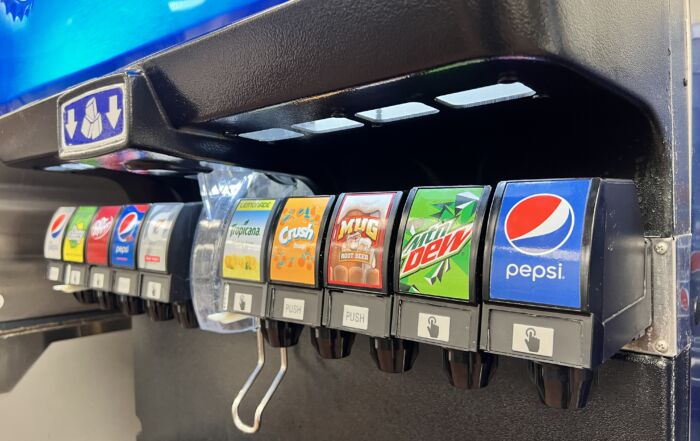Best Practices for Food Storage
This month we are discussing best practices for storing food to ensure quality and safety. Proper food storage can reduce food waste, therefore improving food cost. Earlier this month we covered points to include in communication with vendors such as unit size and package materials. In this blog, we will focus on food storage in the operation. Depending on the scope of your foodservice operation, you might have a variety of storage materials and containers in stock. Key considerations in maintaining quality and safety of food in storage is to protect from deterioration due to exposure from air, moisture, and light, and to protect from contamination. So having the right-size storage container will minimize excess air, which can hasten deterioration.
Clear, plastic containers provide visibility that can assist when taking inventory. Labeling food storage containers with contents and either date packed or use-by date is also important. There are many types of labels available in the market place that show how far the industry has come from the days of masking tape!
When storing food, be sure it does not have contact with non-food safe materials. As we mentioned in the first blog of the month, some package containers used by manufacturers seem like they are recyclable. However, because the chemicals in the plastic will break down during cleaning and sanitizing, there should not be direct contact with food. Strong recycled plastic containers can hold bagged foods, like rice or confections, and provide protection from pest infiltration or damage. Foodservices should invest in food-grade storage products that can be cleaned and sanitized safely, such as those made from food-safe glass or plastics.
Another storage option is disposable bags. Disposable bags are used in foodservices for general utility and storage, freezing, or as part of food preparation. Bags made of low-density polyethylene (LDPE) are flexible and available for purchase in a variety of thicknesses, depending on strength needed. Bags made of this material work well for bakery items, produce, and other foods kept in dry or refrigerated storage. High-density polyethylene (HDPE) material is less transparent than LDPE but stronger. Bags of this material provide better temperature tolerance and are moisture/vapor proof, so work well for freezing food. Bags also fit to the form of the food item, therefore excess air is removed from the package. Remember, the quality of a product is affected by the amount of air, exposure to moisture, and time to reach a frozen state. Smaller units of food items, packed tightly using a moisture/vapor-proof material, will freeze more quickly with fewer ice crystals forming. Excess number and size of ice crystals can damage the food texture. Think about peaches that are firm when fresh, but mushy after being frozen. That results from ice crystals damaging the cells of the peach. Foodservices might consider purchasing multiple sizes of plastic bags. The market also offers various types of closures, i.e. zip-lock or twist tie, and dispensing options, such as saddle packs or roll packs.
The considerations of avoiding excess air and light apply to food preservation as well. More and more foodservices are using in house processing techniques, such as sous vide. If your foodservice engages in in-house processing, discuss with your local health authority the methods and packaging materials, as there are specific Food Code requirements, such as use of impermeable bags. The foodservice might consider investment in blast chillers or blast freezers to chill food quickly to maximize quality. In addition, a variance from the local health regulatory agency may also be required.
Protecting your investment in means keeping the food safe and of high quality to avoid waste, and subsequently, unnecessary cost.
Risk Nothing!

READ MORE POSTS
Maintaining Food Safety Standards Amid Seasonal Turnover
Across the country, summer seems to bring on more than just an influx of business [...]
When Temperatures Rise, Keep Food Safety Top of Mind
Summer brings a welcome increase in business for many restaurants, catering services, and event venues. [...]
Safely Shopping at Farmers’ Markets: A Food Safety Guide for Foodservice Operators and Chefs
Farmers’ markets are an appealing source of fresh, local, and seasonal ingredients for individuals and [...]
Ice Machines, Beverage Dispensers & Other Overlooked Food Safety Hazards
At the end of the spring semester in our campus food production lab, we’re fortunate [...]










